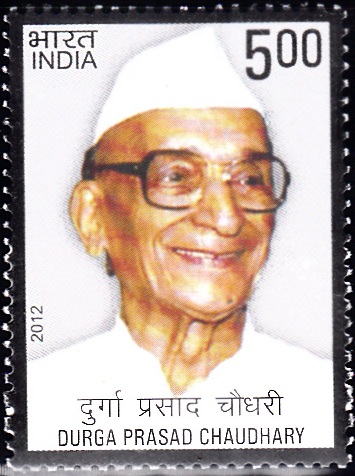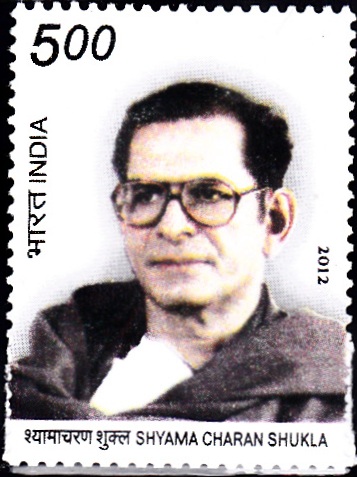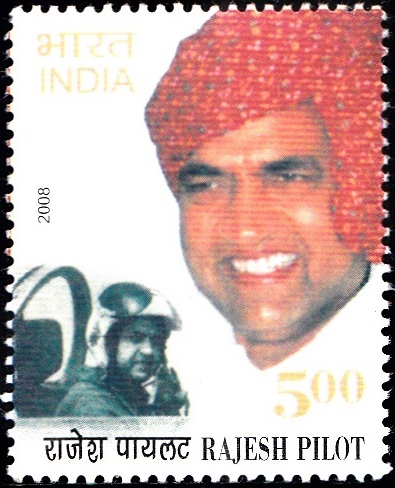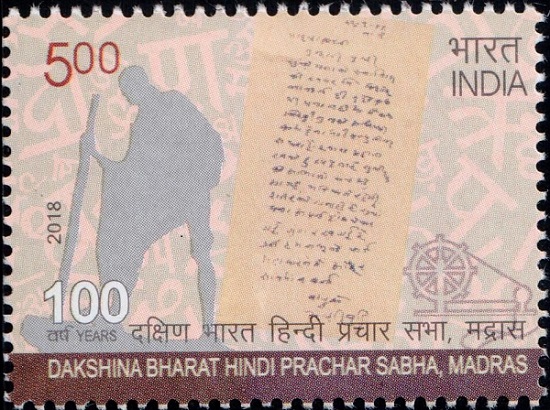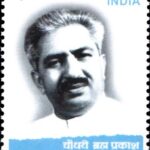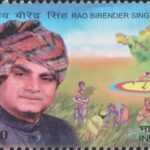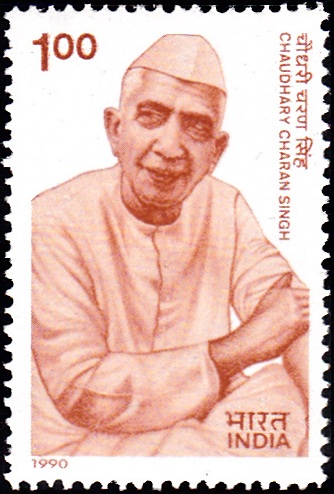
Chaudhary Charan Singh
A commemorative postage stamp on the 2nd Death Anniversary of Charan Singh, 5th Prime Minister of India (1979-80) and 5th Chief Minister of Uttar Pradesh (1970) :
Issued on May 29, 1990
Description of Design : The stamp has been designed at the India Security Press, Nashik. Transparencies for both the stamp and First Day Cover have been provided by Shri Ajit Singh. Cancellation design is by Ms. Nenu Gupta.
Type : Stamp, Mint Condition
Colour : Single Colour
Denomination : 100 Paise
Overall size : 4.06 x 2.73 cms.
Printing size : 3.71 x 2.38 cms.
Perforation : 13 x 13
Paper : Indigenous Un W/M P.G. Matt Coated Gummed Stamp Paper
Number Printed : 10,00,000
Number per issue sheet : 40
Printing Process : Photogravure
Printed : India Security Press
Name : Chaudhary Charan Singh
Born on Dec 23, 1902 at Noorpur, United Provinces, British India [now in Uttar Pradesh, India]
Died on May 29, 1987 at New Delhi, India
About :
- Chaudhary Charan Singh, former Prime Minister of India was born on 23rd December, 1902, to Chaudhary Meer Singh and Smt. Netri Debi, at Noorpur village in Hapur Tehsil of Meerut Commissionery. Brilliant from his childhood, he did his schooling in Meerut, obtained a postgraduate degree in History from Agra University in 1925 and a degree in Law the next year. He started practising law in Ghaziabad in 1928.
- Chaudhary Charan Singh started his political career at Ghaziabad. He formed the Congress Committee at Ghaziabad in 1929 and from 1929 to 1939, was General Secretary of the Ghaziabad District Congress Committee. From 1939 to 1946, he was the General Secretary and President of the Meerut District Congress Committee. In 1937 and 1938, he was elected from Baghpat Ghaziabad Constituency to UP Vidhan Sabha. He was imprisoned in 1930 for six months during the ‘Namak Satyagraha’, and again for a year in 1940 as a Satyagrahee. In 1942, at Mahatma Gandhi‘s call of ‘do or die‘, he raised a secret organisation of revolutionaries in the Meerut Commissionary.
- Chaudhary Charan Singh started his ministerial career in 1948 as ‘Sabha Sachiv‘ in the Pant Ministry and was entrusted the Ministry of Justice and Information. In view of his proven ability, he was asked to prepare the Zamindari Abolition Bill which was passed in the State Assembly on 1st July, 1952 – a revolutionary step in the interest of landless farmers, backward classes and Harijans. Next year, he got the ‘Consolidation Statute‘ passed, which came into effect in 1954. During the next fifteen years he held a number of important cabinet portfolios.
- On 3rd April, 1967, Chaudhary Charan Singh became Chief Minister of UP at the head of coalition government. Due to lack of co-ordination among the coalition factions he launched the Bharatiya Kranti Dal during the mid-term poll, in 1969, which achieved tremendous success. Once again, he became the Chief Minister of UP on 17th February, 1970. Chaudhary Charan Singh was arrested on the night of 26th June, 1975, with the imposition of emergency.
- He merged his Bharatiya Lok Dal with the Janata Party of which he was also one of the founder members. Elected to the Lok Sabha in 1977, he was the Home Minister in the Janata Government. In 1979 he became Deputy Prime Minister and Finance Minister. He later resigned from the Desai Ministry and became the Prime Minister of a coalition government from 24th July, 1979 till January, 1980.
- Chaudhary Sahib felt tremendously for the poor and the distressed and fought against social evils like casteism. He was a follower of Gandhiji in his economic thinking, and propagated moral values in politics. He also wrote books on the economics of rural India and agrarian reform.
- The messiah of farmers, Chaudhary Charan Singh passed away on 29th May, 1987.
- Text : Courtesy by Shri Ajit Singh.


